QuestionI am moving from Vancouver, Canada to Carson City, Nevada. I will be driving and plan to stop overnight at a motel that allows pets. My cat, Sathi, is a Ragdoll and about seven years old. I have a "walking jacket" for him, but I haven't taught him to walk on a leash yet. Would it be better to have a disposable litter box in the back seat or try to stop and walk him? Or stop and take the litter box out and try to get him to use it? What about food and water? I have traveled with a dog, but not with a cat. He likes to sit in his soft carrier when the doors are open, so I think he will be OK in the car once he gets used to it. I just don't know how to handle the nuts and bolts of traveling. Any ideas will be appreciated. I don't think shipping would work. I'll check with my vet before I leave and see if he suggests any meds.
AnswerLinda,
Tidbits of information:
Take the cat, before the move, on several trips in the car (around the neighborhood, on a short trip on the freeway, etc.) to see his reactions and get him used to the sounds and motion.
The best thing to have is as large a dog carrier as you can fit comfortably in your car. One that you can put a shoebox size litterbox in, and towels, etc. that the cat can hide under. Also extra towels incase of an accident. Also drape sheets over the carrier so it is dark. When you stop offer the cat fresh water, especially if he has meowed a lot and his throat is dry. You can also leave the windows down if the cat is in a carrier.
The cat may meow for a VERY long time...or the cat may settle in quickly. It all depends on the personality and temperment of the cat. Some cats gets carsick, but I've never had that problem. But DO NOT feed the cat right before you leave or you WILL have problems! If a cat is a yowler he will eventually tire himself out and go to sleep. There are some cats who enjoy the car and enjoy looking out the window or laying on the backseat looking around. You just have to discover what kind of cat you have.
If you want to let the cat loose in the car, the MOST IMPORTANT thing to remember is NEVER put the car windows down more than about 2 1/2 to 3 inches!! A cat does not have any reasoning abilities and they do not know that if they jump out a window when the car is moving that they will more than likely be killed or severely injured. And a panicked cat can squeeze himself out of a VERY small area.
Do NOT let the cat get under your feet!! That can injure your cat and cause an accident if he gets behind the brake. Be firm about that...right away. Let him know that in front of you is off limits. Even if you have to spank his bottom...gently...to get him to understand and not to do it (but make sure you give him love after if you need to do that, so he is afraid to get under your feet, but NOT afraid of you!). It is VERY important! Also make sure under your dash does NOT have any outlets that he can get out from. Sometimes areas of under the dash have paths that are open to the engine. You will lose your cat if there is!
A cat can zoom out of an opened car door before you even realize he's done it so BEFORE you open a door, hook a leash on the cat and secure him or put him in a carrier...with the cage door closed. Then you can roll down the windows or open the doors.
Collar train the cat before you leave and tape your cell phone number and address of your new home or the number of a relative JUST IN CASE the cat gets out.
Put a litterbox on the floorboard of the front or back seat. If a cat is nervous he may not be able to hold it. Or he can't go until he is relaxed, so be ready when he is. Taking him "for a walk" usually is not productive because there are too many things going on.
You can get Feliway or Feliway with Comfort Zone which is a cat calming spray that copies the calming pheromones of a cat rubbing his face. Spray a cat carrier (large one) about 30 minutes before putting the cat in it to keep him calm or the seats if your car. Humans can't smell it.
Here is a website with a great article on how to train your cat to use the walking jacket: (copy and paste, or type, the whole link into your address bar)
http://www.hdw-inc.com/leashtraining.htm
When I would travel I would stop at places like Kentucky Fried Chicken and get some chicken. Offer the cat some pieces and see if he eats it. If he does, then his nerves are doing OK. Don't give too much but a little at the time is good. Then offer water or maybe a little low-fat milk. The combination may make him sleepy and content. But going without food is not going to hurt him. He just should have something to drink periodically so he doesn't get dehydrated.
Here are some good websites with further information that you may find helpful:
http://moving.about.com/od/movingwithdependents/a/pets_road.htm
http://www.sfspca.org/behavior/cat_library/movingwithyourcat.pdf
http://catnet.stanford.edu/articles/moving_by_car.html
Article about after the move:
http://www.wikihow.com/Keep-a-Cat-from-Running-Away-when-It-Is-Moved
I hope this helps, and that you have a safe trip for both of you to your new home.
Tabbi

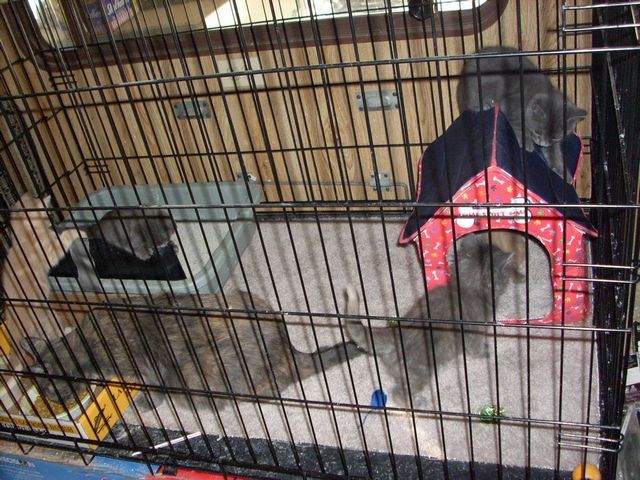 Agression towards guests in the home
QuestionQUESTION: Hello,
About 2 weekends ago, my 4 mo
Agression towards guests in the home
QuestionQUESTION: Hello,
About 2 weekends ago, my 4 mo
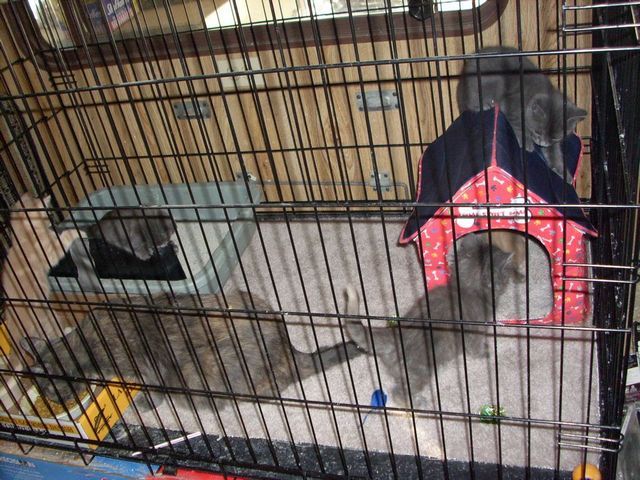 Male/female matter for new cat?
QuestionI have a 2 1/2 yr old male who is very affectio
Male/female matter for new cat?
QuestionI have a 2 1/2 yr old male who is very affectio
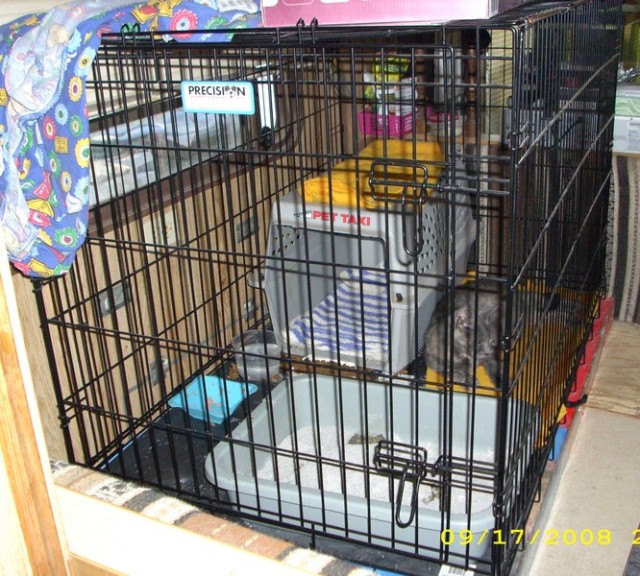 adding a third cat
QuestionI have two female birmans.
they are 4 and 2 an
adding a third cat
QuestionI have two female birmans.
they are 4 and 2 an
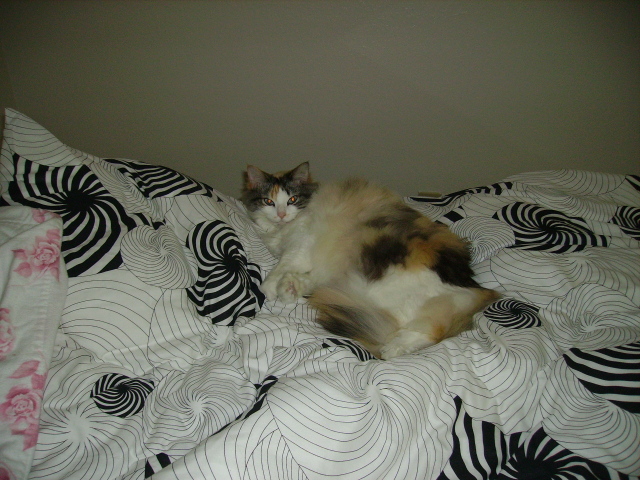 Introducing an Older Cat to 2 grown Hound Dogs
Question
Can this princess shar
Dear Tabbi,
My boyfrie
Introducing an Older Cat to 2 grown Hound Dogs
Question
Can this princess shar
Dear Tabbi,
My boyfrie
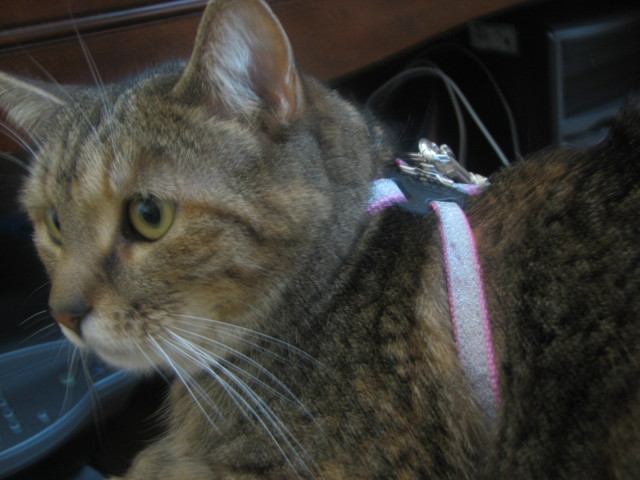 leash training-but being stubborn!
QuestionSTUBBORN CAT! HELP!
QUESTION: I have a c
leash training-but being stubborn!
QuestionSTUBBORN CAT! HELP!
QUESTION: I have a c